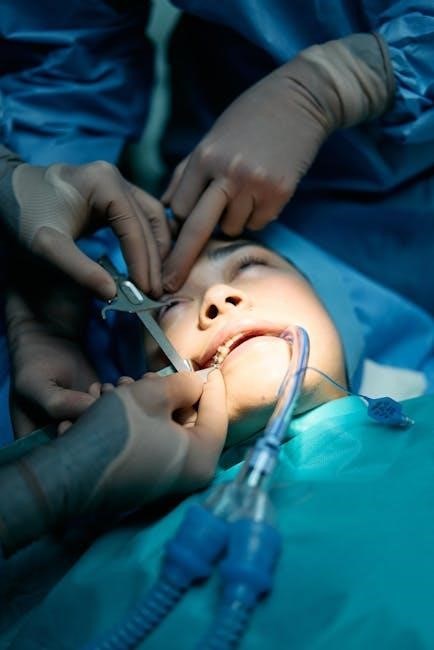
Immediate Post-Operative Care
Bite firmly on gauze for 30-60 minutes to control bleeding. Avoid spitting, rinsing, or using straws for 24 hours. Rest, stay hydrated, and monitor the blood clot formation to promote healing and prevent complications.
1.1. Bleeding Management
After tooth extraction, bite firmly on the gauze for 30-60 minutes to control bleeding. Avoid spitting, rinsing, or using straws for 24 hours to prevent dislodging the blood clot. If bleeding restarts, reposition the gauze or try a dampened tea bag. Minor oozing is normal, but excessive bleeding requires immediate attention. Elevate your head slightly and avoid strenuous activities. Contact your dentist if bleeding persists despite these measures.
1.2. Protecting the Blood Clot
The blood clot is crucial for healing. Avoid actions that could dislodge it, such as spitting, rinsing, or using straws for 24 hours. Keep your tongue and fingers away from the extraction site. Smoking should be avoided to prevent clot disruption. Rest and minimize physical activity to reduce bleeding and protect the clot. A dislodged clot can lead to a dry socket, complicating recovery. Follow all post-operative instructions carefully to ensure proper healing.
1.3. Rest and Hydration
Rest is crucial immediately after surgery. Avoid lying flat and elevate your head slightly to reduce swelling. Stay hydrated by drinking water and clear fluids, but avoid using straws. Limit physical activity for 24 hours to promote healing. Resume normal activities gradually, ensuring not to dislodge the blood clot. Proper rest and hydration are essential for a smooth recovery and to minimize post-operative discomfort.

Dietary Recommendations
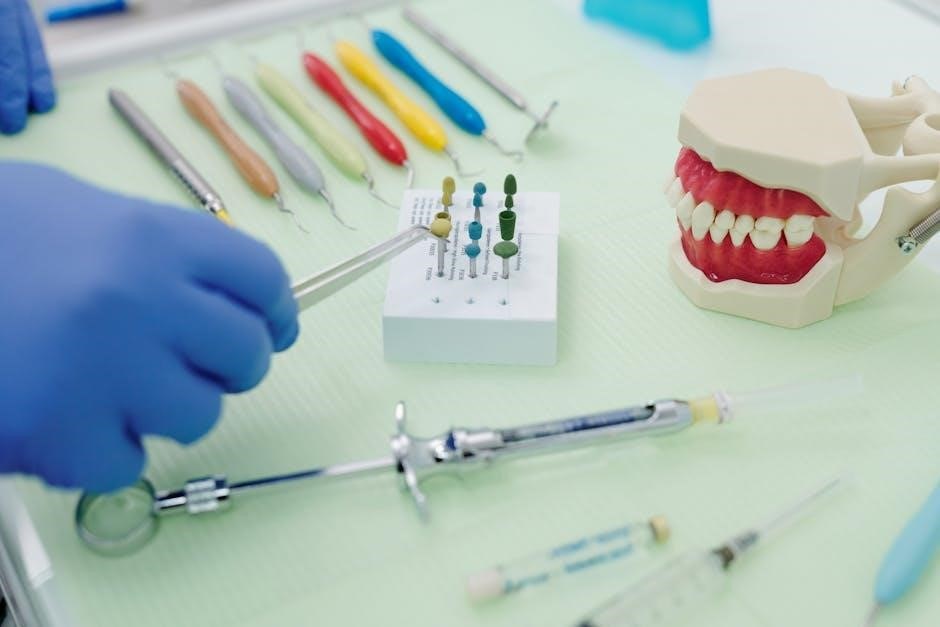
Stick to soft foods like yogurt, eggs, and applesauce for the first 24-48 hours. Avoid hard, crunchy, or sharp foods that could disrupt healing. Opt for warm, non-irritating meals to ensure comfort and proper recovery.
2.1. First 24-48 Hours: Soft Foods
During the first 24-48 hours, opt for soft, non-irritating foods like yogurt, scrambled eggs, and applesauce. Avoid hot, spicy, or acidic foods that could irritate the extraction site; Stay hydrated with water or clear broths, but avoid using straws. Soft foods help minimize discomfort and reduce the risk of dislodging the blood clot. Stock up on gentle options such as mashed potatoes, rice, and soft-cooked vegetables to ensure a smooth and comfortable recovery during this critical healing period.
2.2. Avoiding Hard or Sharp Foods
Avoid hard or sharp foods like chips, nuts, and crunchy fruits for several days. These can irritate the extraction site or dislodge the blood clot, delaying healing. Opt for soft, easy-to-chew options instead. Avoid using straws, as the suction can dislodge the clot. Stick to a gentle diet to protect the surgical area and ensure proper recovery. Hard foods can cause discomfort and potentially lead to complications, so it’s best to reintroduce them gradually once healing is underway.
2.3. Gradual Return to Normal Diet
After the first few days, gradually introduce soft foods like pasta, eggs, and yogurt. Avoid hard or sharp foods for 1-2 weeks. Chew slowly and gently, favoring the opposite side of the extraction site. Stay hydrated with clear fluids and avoid carbonated drinks. As healing progresses, reintroduce firmer foods cautiously. A balanced diet supports recovery, but ensure all foods are easy to chew to prevent discomfort or dislodging the clot. Full recovery typically allows a return to normal eating habits within 2-4 weeks.
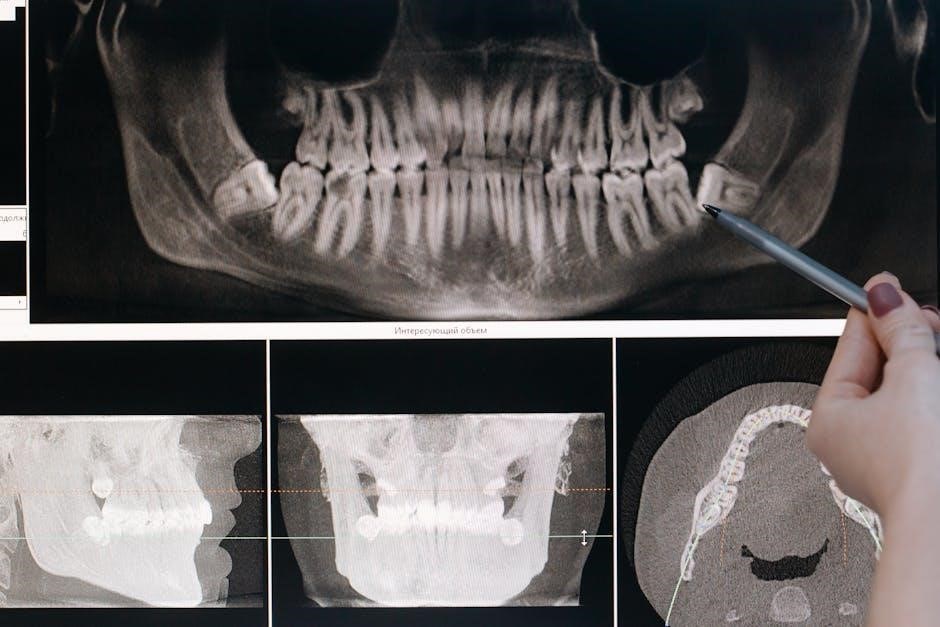
Oral Hygiene
Resume brushing gently 12-24 hours post-surgery, avoiding the extraction site. Start salt water rinses after 24 hours to keep the area clean. Avoid vigorous rinsing to protect the blood clot and promote healing.
3.1. Resuming Brushing
Start brushing gently 12-24 hours after surgery, using a soft-bristled toothbrush. Avoid the extraction site to prevent irritation. Continue brushing normally, focusing on other teeth to maintain oral hygiene. Be gentle around the surgical area to avoid dislodging the blood clot, which is crucial for healing. Gradually increase brushing intensity as comfort allows, ensuring not to disturb the healing socket. Proper oral hygiene helps prevent infection and supports recovery.
3.2. Salt Water Rinsing
Begin salt water rinsing 24 hours after surgery to promote healing. Mix 1 teaspoon of salt in a glass of warm water. Rinse gently 3-4 times daily, especially after meals. Continue this for 7 days to keep the area clean and reduce the risk of infection. Avoid vigorous rinsing to prevent dislodging the blood clot. Salt water rinsing helps soothe the surgical site and supports recovery without causing irritation or delaying the healing process.
3.3. Avoiding Vigorous Rinsing
Avoid vigorous rinsing for the first 24-48 hours to prevent dislodging the blood clot. Gentle salt water rinsing can begin after 24 hours, but avoid forceful spitting or sucking. Vigorous rinsing may disrupt the healing process, leading to complications like dry socket or prolonged bleeding. Protect the surgical site by being gentle during oral hygiene routines to ensure proper recovery. This cautious approach helps maintain the integrity of the blood clot, which is crucial for healing.
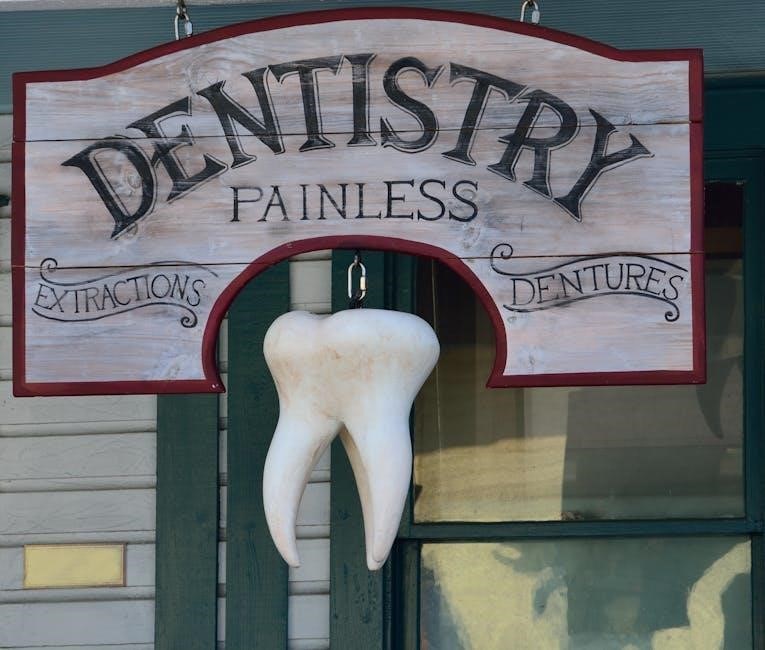
Pain Management
Take prescribed medications as directed to manage discomfort. Over-the-counter pain relievers can be used if recommended. Monitor for severe pain or unusual symptoms and consult your dentist promptly.
4.1. Prescribed Medications
Take prescribed pain medications as directed by your dentist to manage post-operative discomfort. Start medication before the numbness wears off to ensure effectiveness. Follow the dosage instructions carefully and avoid exceeding the recommended amount. If prescribed, continue the course to prevent pain flare-ups. Be aware of potential side effects and inform your dentist if severe or unusual symptoms occur. Pain medication is typically most effective in the first few days following surgery, so use it as needed during this period. Monitor pain levels and adjust as advised by your dental care provider.
4.2. Over-the-Counter Pain Relief
Over-the-counter pain relievers like ibuprofen (Advil, Motrin) or naproxen (Aleve) can effectively manage mild to moderate pain after tooth extraction. These anti-inflammatory medications are often recommended for their ability to reduce swelling and discomfort. For those who cannot take NSAIDs, acetaminophen (Tylenol) is a suitable alternative. Always follow the recommended dosage on the label and consult your dentist if unsure. Avoid exceeding the maximum daily dose to prevent complications such as stomach irritation or liver damage. Use these medications as needed to stay comfortable during the recovery period.
4.3. Monitoring for Discomfort
Monitor your pain levels closely after tooth extraction. If discomfort increases or persists beyond a few days, contact your dentist. Look for signs of complications, such as severe swelling, foul odor, or fever, which may indicate infection. Assess whether over-the-counter pain relief is sufficient or if stronger medication is needed. Report any unusual symptoms promptly to ensure proper healing and avoid prolonged recovery. Regularly evaluating your condition helps identify potential issues early, ensuring a smoother and faster recovery process.

Activity Levels
Rest for 24 hours, avoiding strenuous activities. Avoid lying flat; elevate your head slightly to reduce swelling. Resume normal activities gradually, ensuring not to dislodge the clot.
5.1. Rest Period Recommendations
Rest is crucial in the initial recovery phase. Patients should avoid strenuous activities for the first 24 hours to minimize swelling and promote healing. Lying flat can exacerbate swelling, so elevating the head slightly while resting is recommended. Light activities can gradually resume, ensuring not to dislodge the blood clot. Overexertion may lead to prolonged recovery or complications. It is essential to balance rest with gentle movement to aid the healing process without risking the integrity of the surgical site.
5.2. Avoiding Strenuous Activities
Avoiding strenuous activities is vital during the initial recovery period. Heavy lifting, bending, or intense exercise can dislodge the blood clot, leading to complications like dry socket. Patients should refrain from physical exertion for at least 24-48 hours post-surgery. Gentle movements are acceptable, but overexertion risks delaying healing. It is essential to prioritize rest and avoid activities that may strain the surgical site. Resuming normal activity levels should be gradual and only when discomfort subsides, ensuring the healing process remains uninterrupted.
5.3. Resuming Normal Activities
Resuming normal activities should be done gradually, typically within a few days post-surgery. Patients can return to light tasks like reading or watching TV soon after, but vigorous activities should be avoided for 48-72 hours. Avoid heavy lifting, bending, or exercise that could dislodge the blood clot. Monitor your body’s healing progress and discomfort levels to pace your activity. Once comfortable, you can slowly reintroduce routine activities, ensuring they don’t strain the surgical site. Full recovery may take up to a week, depending on the procedure’s complexity.
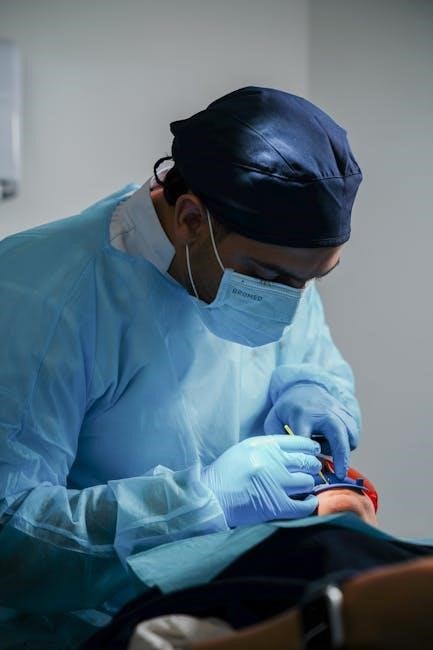
Follow-Up Care
Monitor healing progress, watch for signs of complications, and attend scheduled appointments to ensure proper recovery and address any concerns promptly for optimal healing outcomes.
6.1. Monitoring Healing Progress
Regularly check the extraction site for signs of healing, such as clot formation, tissue granulation, and reduction of swelling. Attend follow-up appointments to ensure the wound is healing properly. Your dentist will assess the site for any irregularities or potential issues. Proper monitoring helps identify complications early, such as dry sockets or infections. Maintaining open communication with your dentist is crucial for a smooth recovery. Adhere to post-operative instructions to support the healing process and prevent setbacks.
6.2. Signs of Complications
Watch for signs of complications, such as increased pain, swelling, or bleeding beyond 24 hours. Fever, bad taste, or visible bone fragments may indicate a dry socket. Numbness, tingling, or persistent discomfort could signal nerve damage. Redness, pus, or delayed healing may suggest infection. If you experience these symptoms, contact your dentist immediately. Prompt attention can address issues early and prevent further complications, ensuring proper healing and recovery.

6.3. Importance of Follow-Up Appointments
Attending follow-up appointments is crucial for monitoring healing progress and ensuring no complications arise. Your dentist will assess the extraction site, remove sutures if necessary, and confirm proper healing. These visits allow early detection of issues like dry sockets or infections. Adhering to scheduled appointments ensures a smooth recovery and helps prevent potential setbacks. Consistent care fosters optimal healing and minimizes risks, ensuring long-term oral health and well-being after tooth extraction.

Additional Considerations
- Avoid smoking and alcohol to prevent healing delays and complications.
- Refrain from using straws to avoid dislodging the blood clot.
- Impacted tooth extraction may require extra care to manage swelling and numbness.
7.1. Smoking and Alcohol Avoidance
Smoking and alcohol consumption should be avoided for at least 24 hours after tooth extraction. Smoking can delay healing, increase the risk of infection, and dislodge the blood clot. Alcohol, especially when combined with pain medications, can impair healing and prolong recovery. Avoiding these habits ensures proper clot formation and reduces complications. For those trying to quit, consider using nicotine replacement therapy or consult a healthcare provider for support. Abstinence from smoking and alcohol is crucial during the initial healing phase to promote a smooth recovery.
7.2. Avoiding Straws and Sucking Actions
Avoid using straws and any sucking actions for 3-4 days post-extraction. Suction can dislodge the blood clot, leading to dry socket or prolonged healing. Refrain from actions like drinking through straws, spitting, or vigorous rinsing. Instead, gently sip fluids and eat soft foods to maintain the clot. Adhering to this precaution ensures proper healing and minimizes the risk of complications. This simple precaution significantly supports the recovery process and prevents unnecessary setbacks.
7.3. Impacted Tooth Extraction Care
Impacted tooth extraction requires careful attention due to its complexity. After surgery, avoid actions that could dislodge the blood clot, such as spitting or using straws. Stick to soft foods and gentle brushing around the site. Monitor healing progress closely and follow specific aftercare instructions provided by your dentist; This ensures proper wound closure and prevents complications like dry sockets. Adhering to these guidelines supports a smoother recovery and reduces the risk of infection or prolonged healing times.

Wisdom Tooth Extraction Specifics
Extended recovery time is common for wisdom tooth extraction due to potential swelling. Ice packs can reduce swelling, and monitor for numbness or tingling.
8.1. Extended Recovery Time
Wisdom tooth extraction typically requires a longer recovery period due to the complexity of the procedure. Patients should expect swelling and discomfort to last several days. Rest is crucial during the first 24-48 hours, with gradual resumption of normal activities. Ice packs can help reduce swelling, and soft foods are recommended to avoid irritating the surgical site. Avoiding strenuous activities and adhering to post-operative instructions ensures proper healing and minimizes complications. Recovery may vary based on individual health and the difficulty of the extraction.
8.2. Swelling and Ice Pack Use
Swelling is common after wisdom tooth extraction, particularly around the cheeks and jaw. To reduce swelling, apply an ice pack to the affected area for 15-20 minutes several times a day. Keep your head elevated to minimize swelling. Ice packs should be used gently and not left on the skin for extended periods. Swelling typically subsides within a few days. Following these steps helps ensure a smoother recovery and reduces discomfort during the healing process.
8.3. Managing Numbness or Tingling
Numbness or tingling near the extraction site is common, especially if the tooth was impacted or near nerves. This sensation typically fades within a few days to weeks. Avoid chewing on the numb area to prevent injury. Gentle massage or ice packs may help, but most cases resolve naturally. If numbness persists beyond expected healing time or causes concern, contact your dentist for evaluation. Monitoring and patience are key, as sensation usually returns without further intervention.